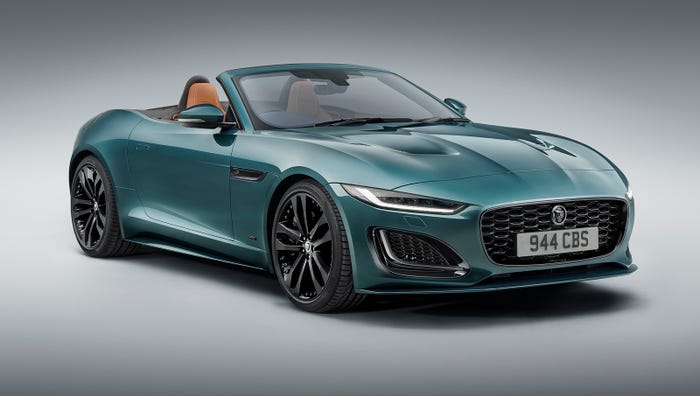Diesel Research Heats Up
Diesel engines have grown rapidly in popularity and now power about half of new vehicles in Europe, but they will continue to improve through optimization of existing technologies.

Diesel engines have grown rapidly in popularity and now power about half of new vehicles in Europe, but they will continue to improve through optimization of existing technologies.
“We are working on improving current diesel technologies, with very high-pressure injection to 2,500 bar (36,250 psi), downsizing and 2-stage turbos,” says Gaetan Monnier, the director of 190 engineers and technicians researching engines at the Institut Français de Pétrole (IFP).
“It's not a rupture, not a revolution. It's how can we better exploit the existing technologies by taking a global view,” Monnier says. “We have engines in the laboratory getting 90 kW (120 hp) per liter of displacement. The best out there is BMW at 67 kW (90 hp) per liter.”
France established the IFP after World War II to ensure the country would have an oil industry, then added engine research so oil would not be wasted. For the last 20 years, the IFP has studied alternatives to petroleum, and in February it doubled its budget for non-petroleum energy research.
“Our job now is to assure the transition of transportation energy from petroleum,” Monnier says.
While no one knows when it will happen, the finite nature of petroleum means it will one day run out, and a substitute will be needed. “Our job during the transition is to exploit to the best ability our resources and waste the least to minimize the consumption of energy.”
Because diesel fuel packs more carbon per liter than gasoline, it is inherently a more efficient fuel, but its combustion also is harder to clean up.
“If we were free to pollute, motors could be more efficient,” Monnier says, “but we won't go backwards on pollution. The constraint in diesel development is to keep the efficiency while improving the exhaust.”
Diesels are moving toward a technology known as homogeneous charge compression ignition. Because an HCCI engine operates at lower temperatures than a diesel, it produces fewer oxides of nitrogen (NOx) and less soot.
However, it doesn't work well when lots of power is required, and the IFP has given up hope that it can make HCCI engines that would require no exhaust aftertreatment.
However, combining HCCI with regular diesel technology may provide some solutions. IFP has developed a Class 8 truck engine that switches to HCCI mode during idle, cutting fuel consumption in half.
The IFP concentrates its work on combustion, and while it evaluates the engine, “optimization for production is not in our zone of activity,” Monnier says. “We calculate the losses to internal friction, for example, but we don't work on new materials or designs that would minimize the friction losses.”
In addition to engines, the IFP works to improve petroleum fuels.
“We're trying to learn how to mix ethanol into diesel; what impact it would have on Europe,” Monnier says. The difficulty is that a new fuel also has to work in older cars and trucks.
“We think there will be stages of change” toward biodiesel, he says. “Today, we have a diesel running on 100% biofuel, made up of ethanol, esthers and bioingredients. It's a future fuel. But you couldn't put it on the market now. Today's diesels couldn't use it.”
IFP, PSA Pursue Diesel Hybrids
The Institut Français de Pétrole (IFP) is working with PSA Peugeot Citroen in a program supported by France to develop a diesel-hybrid powertrain for 2010.
PSA introduced the concept at the Paris auto show last fall in two prototypes: the Peugeot 307 hybrid HDi and the Citroen C4 hybrid HDi. The cars, the size of a Ford Focus, get 69 mpg (3.4 L/100 km) and emit 90 g/km of carbon dioxide compared with the 55 mpg (4.2 L/100 km) and 104 g/km from a Toyota Prius.
The idea is that because people are willing to pay about $2,000 more for a diesel that is 20% more efficient than a gasoline engine, customers should be willing to pay another $2,000 for a car that is 20% more efficient than a diesel.
While the main challenge remains improving battery performance and reducing system cost, the IFP is working with PSA engineers on the powertrain control strategy.
“The goal is to minimize energy consumption for transportation; how to exploit fuel in the best way,” says Gaetan Monnier, director of engine research at the IFP.
“For diesels, the problem is that at full load the emissions are hard to clean up. When diesels are most efficient, they make the most NOx (oxides of nitrogen).”
PSA's strategy is to use the electric motor to improve diesel emissions. If the electric motor boosts horsepower during hard acceleration, the engine won't have to run at full load and will produce less NOx to clean up. During idle, the engine could run at a faster, more efficient speed to recharge the battery.
The IFP has calculated a mild hybrid with 13.4 hp (10 kW) of electric energy could cut fuel consumption in urban settings by 30%.
— William Diem
Read more about:
2007About the Author
You May Also Like



